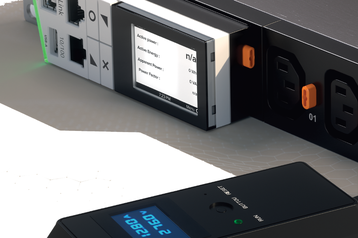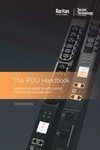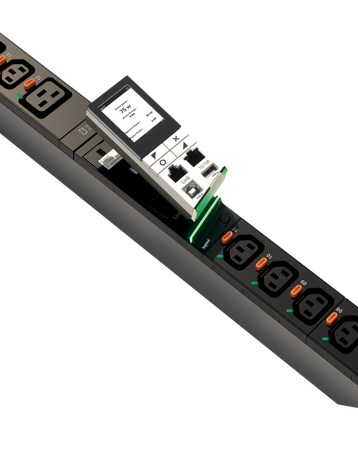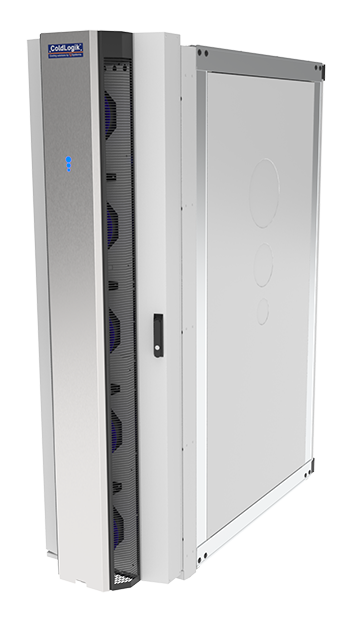Power is nothing without control, goes the old saying, but with great power also comes great challenges: Efficiency, safety (of course), and dealing with the heat it generates.
That’s something data center operators know only too well, often coming under fire for the amount of power they consume, both to run servers as well as cooling.
Those issues often devolve into general discussions about PUE and the trade-offs between power and water consumption. But when it comes to cooling, the truth is that improving both of these aspects will require data center operators to implement the latest, most capable components, such as more efficient power distribution (PD) components and heat exchangers.
Moreover, demand for power distribution capable of handling greater levels of power shows no sign of abating, says Nicolas Maupas, marketing manager, Strategic Business Unit, at Legrand.
“In terms of power distribution, we’ve seen a big increase on power demand. So we’re going more and more for three-phase PDU with 32 amps and even higher – up to 63 amps is becoming more common, too,” says Maupas. Much of this, he adds, is driven in anticipation of a boom in demand driven by artificial intelligence applications, with data center operators already scaling up as AI – such as ChatGPT – takes off.
Overall, there are four main drivers behind this trend in PDUs, Maupas continues value for price, security, service levels and competitiveness.
“Customers are already very careful in terms of finding the balance between the product, and the features and functions that it will bring so it’s really about finding the right balance,” he says.
Maupas believes that Legrand has found that balance with its new range of Linkeo Data Center PDUs – PDUs that support the ever-rising power demands of the modern data center, with added intelligence, but at a chief financial officer-friendly price.
“We designed a modular product that enables the customer to configure it for their application. We asked ourselves, what are the key differences between a basic PDU and an intelligent PDU? So when we’re speaking about an intelligent PDU, we really mean a networked PDU so that you can collect data and control the PDU remotely.
“We took the decision that if you’re collecting the data remotely, you no longer need a display. After all, you might have one master PDU, connected to the LAN, and a cascade of PDUs connected downstream, but if you can collect data from them remotely why do they each need a display? As a result, that makes the solution cheaper; an advantage in terms of capital expenditure,” says Maupas.
Class monitor
The other key innovation of Legrand’s Linkeo DC PDUs is the embedded wireless technology that enables it to communicate a wide range of environmental information over-the-air. That has also enabled Legrand to remove the sensor port, and going all-wireless makes for an easier, less cable-strewn installation.
“In terms of monitoring,” says Maupas, “we monitor all main power data and in terms of the data center environment, temperature, humidity and contact closure. But with Linkeo DC PDU we have focused on the 80 percent of the need, not all and every potential need.
“For example, if some customers want vibration monitoring or water-leakage monitoring that’s not something we provide in this range because they’re quite rare in a PDU application. With Linkeo Data Center PDUs.we really wanted to focus on the most used, the most important applications and not to over-spec’ because we want to provide the best value for the price.”
After all, the aim of the Linkeo DC PDU is to provide a cost-effective product with maximum bang-for-buck. Customers with specific needs, of course, will be catered for by other PDU products in the Legrand portfolio, including products under the Raritan and Server Technology premium ranges.
But performance is nothing if not backed up by robust design that guarantees business continuity. “With internal busbar design high temperature rating and individual quality checks at factory, we wanted to do our utmost to supply a reliable product” Maupas confirms.
In terms of security, all Legrand’s C13 and C19 outlets feature autolocking with 100 Newton retention force to prevent accidental disconnection. The cord locking system is compatible with all standard C14 and C20 plugs but, Maupas cautions, it is also important to secure the full chain and server side.
And not atleast, a reliable high performance product must be available within a reasonable timeframe. Linkeo Data Center PDUs are assembled in several factories all over the world, close to their next destination markets with the added capability of customizing configurations.
Take it away!
But what about Coldlogik- Cooling Solutions by Usystem, a brand of Legrand for better control of waste heat?
Conventionally, in a purely air-cooled data center the waste heat will be expelled into a hot aisle, and from there ejected outside. But this is no longer enough. The growing demands for greater sustainability (not to mention data center operators’ own ambitious net-zero pledges) mean that in time this will also need to be reused.
But transitioning completely to either liquid cooling or immersion cooling demands a significant upfront investment and can cause some disruption.
The compromise solution from Legrand USystems is the rear door heat exchanger, which uses active heat exchange to cool the exhaust air directly at source, the rear of the rack, to maintain a set ambient temperature in the data hall, meaning a hot aisle is no longer necessary. “At the moment, the current demand in data centers is for air and liquid cooling combined,” says Paul Walton, engineering consultant at Legrand.
However, he adds, it isn’t necessary to go all-liquid in order to drive huge energy and other savings. “We believe you can achieve up to 93 percent in terms of energy savings alone, but can also reduce CO2 emissions by up to 99 percent and water savings of up to 100 percent, because it's circulated in a closed loop.
“And, on top of that, you can achieve space savings of up to 95 percent, not just because you no longer need raised floors and hot aisles, but also through the ability to massively increase rack density while utilizing space previously required by supplementary cooling, too,” says Walton.
Rear door heat exchangers, he continues, are better described as providing air-assisted liquid cooling, enabling the same high performance and energy savings of pure liquid cooling, but without the specialist hardware or supplementary cooling infrastructure required to cool the rest of the data center.
Moreover, they can support cooling for rack densities all the way up to 200kW.
“It’s fully scalable. You could have one or do every rack in the hall. Moreover, the rear-door heat exchanger has intelligence built-in which, like the Linkeo PDUs, can be remotely monitored and controlled. So if there’s any downtime on one of the rear doors the rest can pick up the slack in that area.
“You don’t have the fans running at 100 percent, but they self-regulate airflow based on the rack heat generated, and the desired temperature of your data center. This means each door only draws as much energy as required, reacting live to your cooling needs, and requiring no operator management to account for peak activity events.
“As well as being individually monitored, each fan is hot-swappable, too, so can be replaced or upgraded while the server is still running, maximizing uptime,” says Walton.
That built-in intelligence doesn’t just relate to the individual fan doors, but enables them to ‘work’ as a collective, too, he adds.
“If you've got a fan failure on one of the doors, it can generate alarms to alert the engineers monitoring the system, telling them that there's a fan down. In the meantime, the intelligence will sense the increased heat generation in the ambient room temperature and increase (or decrease) the load on adjoining doors in that local area, accordingly, in order to bring down the temperature to whatever has been preset.”
Of course, Walton is also keen to point out that the devices have a guarantee that they will last as long as the data center, but it is a fact of life that parts do fail and, when they do, it’s good to know that there will be alerts and that the parts can be swapped out quickly, easily and with zero downtime.
In time, perhaps, data center operators will move to full liquid cooling with heat capture and reuse. But sustainability is a journey, and journeys need to be taken step-by-step. Legrand’s PDUs and USystems rear door heat exchangers represent new steps forward in data center operators’ journeys towards net-zero – ones that need to be taken quickly if they’re to achieve the pledges they made to reach it by 2030 or 2035.
Find out more about Legrand’s new range of Linkeo DC PDUs and ColdLogik rear door heat exchangers and what they can do for your data center here.
More from Legrand
-
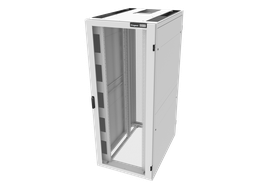
Sponsored Grand designs: How better cabinets enable data center operators to do more
Increased compute density is all very well, but can ordinary server cabinets optimize the airflow management to support it, asks Legrand’s Saman Berookhim
-

Significant Advancements in Rack PDU Power Quality
Explore how utilizing monitoring and metrics can greatly improve uptime
-

The advances in rack PDU firmware every data center operator needs to know about
New demands from high-performance compute are placing even bigger demands on rack PDUs. How are companies like Legrand helping data center operators to keep up?

